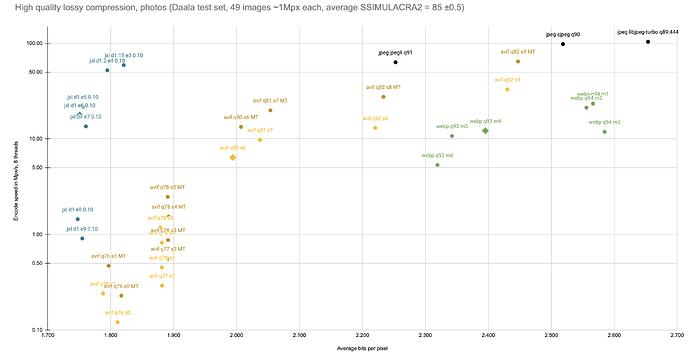In general, AVIF is the best choice if your main objective is to get the maximum compression while maintaining outstanding image quality. On the other hand, JPEG XL is a flexible option if you require a format that delivers a well-rounded solution, accommodating both lossless and lossy compression, and catering to a wide range of applications.
Do check the below-given links if you wish to learn more about formats and comparisons:
Gumlet became the first cloud provider to provide automatic support for the JPEG XL format.
Here’s a detailed comparison between these two formats:
1. Efficiency of Compression
JPEG XL
JPEG XL uses a flexible and effective compression method for larger ratios without sacrificing image quality. It can be used for a variety of applications because it supports both lossless and lossy compression.
AVIF
AVIF (AV1 Image File Format) is a video codec that was derived from AV1 and is renowned for its remarkable compression performance, particularly in high-quality and lossless modes. When compared to JPEG XL, AVIF frequently produces lesser file sizes for some types of photos.
2. Image Quality
JPEG XL
Created to produce high-quality photos with a minimum amount of artifacts, even at harsh compression levels, JPEG XL makes use of cutting-edge technologies like Variable Quantization to adaptively allocate bits to various areas of the image in order to preserve important information.
AVIF
AVIF excels at keeping image quality, especially in lossless and high-quality settings. When compared to more traditional formats like JPEG, it benefits from the superior compression methods of the AV1 video codec, producing images with fewer compression artifacts.
3. Supported Browsers
JPEG XL
JPEG XL support in browsers was minimal but steadily growing as of my most recent update in September 2021. There were third-party libraries available to improve compatibility, and some browsers, like Chrome, offered experimental support.
AVIF
In 2021, AVIF encountered similar difficulties with browser support but was progressing. It’s vital to check the most recent browser compatibility for both formats as of 2023 because both were relatively new.
4. Flexibility and features
JPEG XL
JPEG XL offers a number of characteristics, such as lossless compression, visibility (alpha channels), animation, and progressive rendering. It is suitable for a variety of image kinds because of its adaptability.
AVIF
AVIF also enables animation, transparency, and lossless compression. Its compatibility with the AV1 video codec and several of its capabilities make it an excellent choice for high-quality and high-resolution photos.
5. Speed of Encoding and Decoding
JPEG XL
Depending on the individual implementation, JPEG XL encoding and decoding times can vary. In general, it offers enough performance for the majority of use scenarios.
AVIF
In particular for high-quality and lossless versions, AVIF encoding and decoding can be computationally demanding. However, software and hardware optimizations keep becoming better over time.
In conclusion, which format is better depends upon your needs and requirements. As we discussed above, JPEG XL is a good choice if you place a focus on adaptability and finding a satisfying balance between compression effectiveness and image quality. On the other hand, AVIF might be a better option if your main requirement is for the best compression efficiency, particularly for top-quality photographs.
You can read more about this topic here: How did Gumlet become the first cloud service provider?
